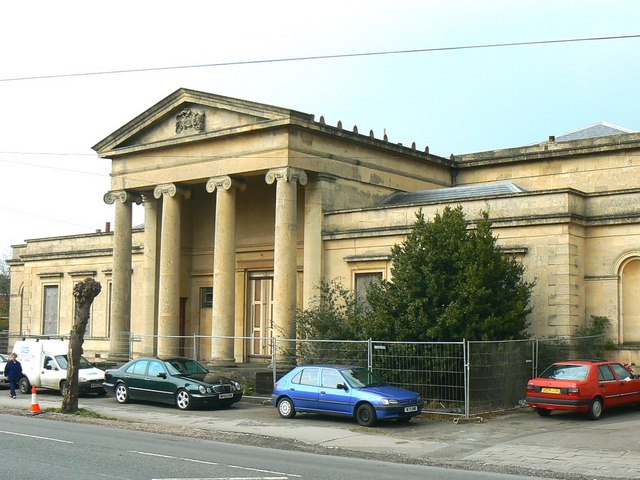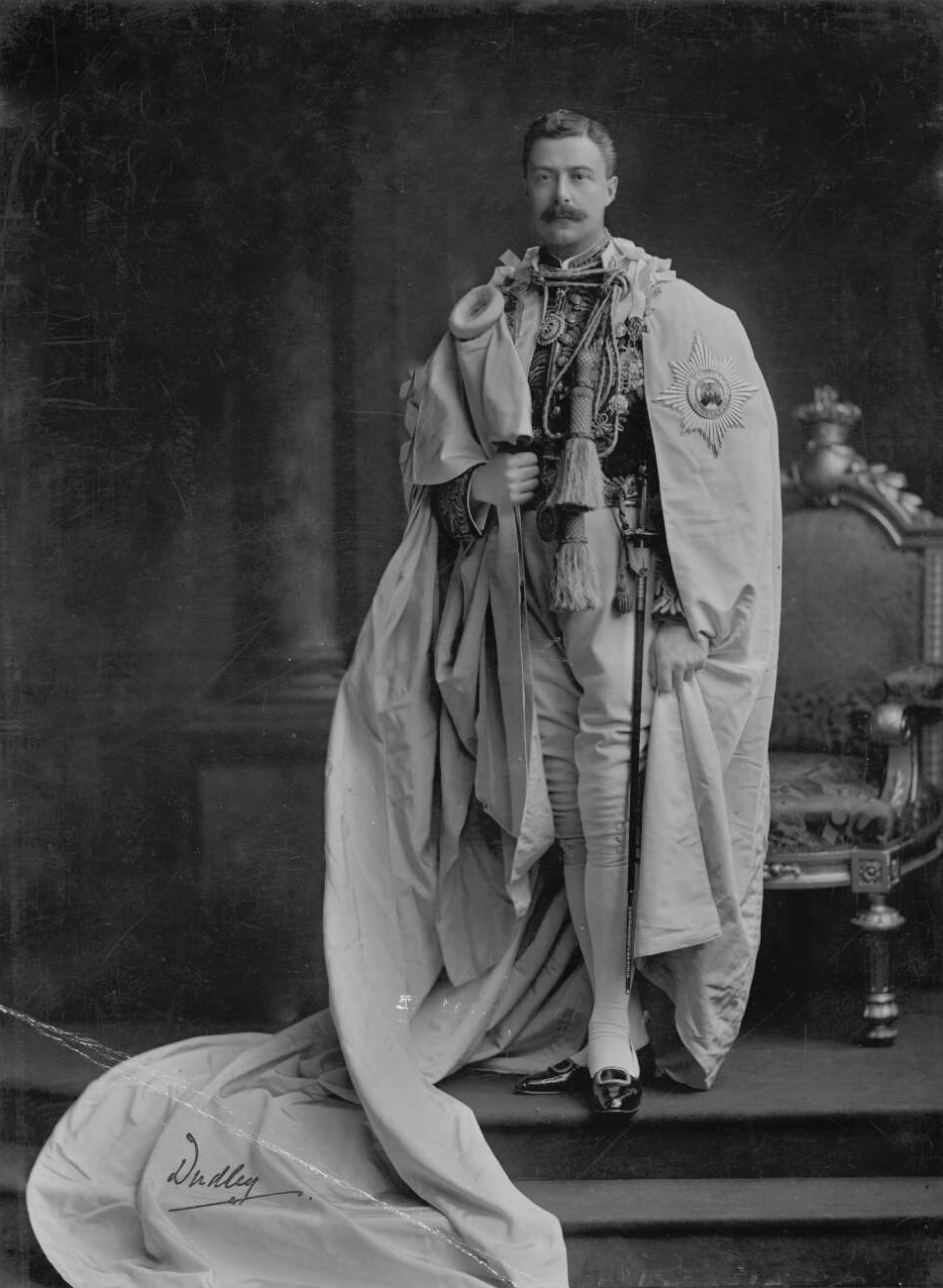|
John Lyndon
Sir John Lyndon (c. 1630-1699) was an Irish judge and politician of the seventeenth century. He was the first holder of the office of Third Serjeant-at-law, which was created especially for him, apparently as a "consolation prize" for not being made a High Court judge the first time he sought that office. Early career He was born in Carrickfergus, son of Captain Roger Lyndon, Collector of Customs for the town of Carrickfergus, and his wife Jane Marten. The Lyndons were a prominent Carrickfergus family who settled in the town in the 1590s, though at least one branch of John's own descendants were associated with Dublin. One Henry Lyndon was Mayor of Carrickfergus in 1600. John had at least one brother, also named Roger, who in 1666 married Dorothy Newburgh, daughter of Thomas Newburgh MP of Ballyhaise, County Cavan. John was educated at Trinity College, Dublin. He entered Lincoln's Inn in 1657, although it seems that he was not formally called to the Bar in England, something whi ... [...More Info...] [...Related Items...] OR: [Wikipedia] [Google] [Baidu] |
Carrickfergus
Carrickfergus ( , meaning " Fergus' rock") is a large town in County Antrim, Northern Ireland. It sits on the north shore of Belfast Lough, from Belfast. The town had a population of 27,998 at the 2011 Census. It is County Antrim's oldest town and one of the oldest towns in Ireland as a whole. Carrickfergus Castle, built in the late 12th century at the behest of Anglo-Norman knight John de Courcy, was the capital of the Earldom of Ulster. After the earldom's collapse, it remained the only English outpost in Ulster for the next four centuries. Carrickfergus was the administrative centre for Carrickfergus Borough Council, before this was amalgamated into the Mid and East Antrim District Council in 2015, and forms part of the Belfast Metropolitan Area. It is also a townland of 65 acres, a civil parish and a barony. The town is the subject of the classic Irish folk song " Carrickfergus", a 19th-century translation of an Irish-language song (''Do Bhí Bean Uasal'') from Mu ... [...More Info...] [...Related Items...] OR: [Wikipedia] [Google] [Baidu] |
Court Of Common Pleas (Ireland)
The Court of Common Pleas was one of the principal courts of common law in Ireland. It was a mirror image of the equivalent court in England. Common Pleas was one of the four courts of justice which gave the Four Courts in Dublin, which is still in use as a courthouse, its name. History According to Elrington Ball the Irish Court of Common Pleas, which was known in its early years as ''the Common Bench'' or simply ''the Bench'', was fully operational by 1276. It was headed by its Chief Justice (the Chief Justice of the Irish Common Pleas, as distinct from the Lord Chief Justice of Ireland, who was the head of the Irish Court of King's Bench). He had two (occasionally three) justices to assist him. The first Chief Justice was Sir Robert Bagod, former High Sheriff of County Limerick, a member of an old Dublin family which gave its name to Baggot Street. In the early centuries, he was often referred to as "Chief Justice of the Bench", or "the Dublin Bench". Traditionally it ... [...More Info...] [...Related Items...] OR: [Wikipedia] [Google] [Baidu] |
William Aston (Irish Judge)
Sir William Aston (1613-1671) was an English-born barrister, politician and soldier, who fought with distinction in Ireland for King Charles I during the English Civil War. Although he made his peace with the Cromwellian regime after the King's defeat, he is believed to have remained a convinced Royalist at heart. He was rewarded for his loyalty to the Crown with a seat on the Irish High Court Bench after the Restoration. His eldest son was hanged for murder in 1686. His last direct male descendant, also named William Aston, was the ''de jure'' 6th Lord Aston of Forfar.Cokayne ''Complete Peerage'' Reprinted Gloucester 2000 Vol. 1 p.289 Background He was born at Leigh, Staffordshire, son of John Aston and his wife, Margery Walton, daughter of James Walton of Fole. His father was the grandson of Sir Walter Aston of Tixall, who was also the grandfather of the 1st Lord Aston of Forfar. He entered Gray's Inn in 1639, and then moved to Ireland. In 1646, he was serving as a major in ... [...More Info...] [...Related Items...] OR: [Wikipedia] [Google] [Baidu] |
Murder
Murder is the unlawful killing of another human without justification or valid excuse, especially the unlawful killing of another human with malice aforethought. ("The killing of another person without justification or excuse, especially the crime of killing a person with malice aforethought or with recklessness manifesting extreme indifference to the value of human life.") This state of mind may, depending upon the jurisdiction, distinguish murder from other forms of unlawful homicide, such as manslaughter. Manslaughter is killing committed in the absence of ''malice'',This is "malice" in a technical legal sense, not the more usual English sense denoting an emotional state. See malice (law). brought about by reasonable provocation, or diminished capacity. ''Involuntary'' manslaughter, where it is recognized, is a killing that lacks all but the most attenuated guilty intent, recklessness. Most societies consider murder to be an extremely serious crime, and thus that a ... [...More Info...] [...Related Items...] OR: [Wikipedia] [Google] [Baidu] |
Wool
Wool is the textile fibre obtained from sheep and other mammals, especially goats, rabbits, and camelids. The term may also refer to inorganic materials, such as mineral wool and glass wool, that have properties similar to animal wool. As an animal fibre, wool consists of protein together with a small percentage of lipids. This makes it chemically quite distinct from cotton and other plant fibres, which are mainly cellulose. Characteristics Wool is produced by follicles which are small cells located in the skin. These follicles are located in the upper layer of the skin called the epidermis and push down into the second skin layer called the dermis as the wool fibers grow. Follicles can be classed as either primary or secondary follicles. Primary follicles produce three types of fiber: kemp Kemp may refer to: Places * Kemp, Illinois * Kemp, Ohio * Kemp, Oklahoma * Kemp, Texas * Kemp Land and Kemp Coast, Antarctica * Kemp Town, a 19th-century estate in East Sussex, En ... [...More Info...] [...Related Items...] OR: [Wikipedia] [Google] [Baidu] |
Thomas Nugent, 1st Baron Nugent Of Riverston
Thomas Nugent (died May 1715) was an Irish Roman Catholic barrister who became Lord Chief Justice of Ireland under James II of Great Britain, and held a 1689 title as Baron Nugent of Riverston (of complex status). Early life He was the second son of Richard Nugent, 2nd Earl of Westmeath, by his wife Mary, daughter of Sir Thomas Nugent, 1st Baronet, of Moyrath, and widow of Christopher Plunkett. He was brought up to the law, and after the accession of James II he was made King's Counsel in September 1685, although his enemies said that he was "no lawyer". During the following winter he was in communication with the Lord-Lieutenant of Ireland, Henry Hyde, 2nd Earl of Clarendon, who treated him as a representative of the Irish Catholics. Nugent made his residence at Pallas, County Galway, an estate that his grandfather had acquired in 1621. He married in 1680 to Marianna Barnewall, daughter of Henry Barnewall (died 1688), 2nd Viscount Barnewall of Kingsland and Hon. Mary Netterville ... [...More Info...] [...Related Items...] OR: [Wikipedia] [Google] [Baidu] |
Assize
The courts of assize, or assizes (), were periodic courts held around England and Wales until 1972, when together with the quarter sessions they were abolished by the Courts Act 1971 and replaced by a single permanent Crown Court. The assizes exercised both civil and criminal jurisdiction, though most of their work was on the criminal side. The assizes heard the most serious cases, which were committed to it by the quarter sessions (local county courts held four times per year), while the more minor offences were dealt with summarily by justices of the peace in petty sessions (also known as magistrates' courts). The word ''assize'' refers to the sittings or sessions (Old French ''assises'') of the judges, known as "justices of assize", who were judges who travelled across the seven circuits of England and Wales on commissions of " oyer and terminer", setting up court and summoning juries at the various assize towns. Etymology Middle English < |
Ulster
Ulster (; ga, Ulaidh or ''Cúige Uladh'' ; sco, label=Ulster Scots, Ulstèr or ''Ulster'') is one of the four traditional Irish provinces. It is made up of nine counties: six of these constitute Northern Ireland (a part of the United Kingdom); the remaining three are in the Republic of Ireland. It is the second-largest (after Munster) and second-most populous (after Leinster) of Ireland's four traditional provinces, with Belfast being its biggest city. Unlike the other provinces, Ulster has a high percentage of Protestants, making up almost half of its population. English is the main language and Ulster English the main dialect. A minority also speak Irish, and there are Gaeltachtaí (Irish-speaking regions) in southern County Londonderry, the Gaeltacht Quarter, Belfast, and in County Donegal; collectively, these three regions are home to a quarter of the total Gaeltacht population of Ireland. Ulster-Scots is also spoken. Lough Neagh, in the east, is the largest la ... [...More Info...] [...Related Items...] OR: [Wikipedia] [Google] [Baidu] |
Court Of King's Bench (Ireland)
The Court of King's Bench (of Queen's Bench when the sovereign was female, and formerly of Chief Place or Chief Pleas) was one of the senior courts of common law in Ireland. It was a mirror of the Court of King's Bench in England. The King's Bench was one of the "Four Courts" which sat in the building in Dublin which is still known as " The Four Courts", and is still in use. Origins According to Elrington Ball,Ball, F. Elrington ''The Judges in Ireland 1221–1921'' John Murray London 1926 the Court called ''the King's Bench'' can be identified as early as 1290. It was fully operational by 1324, headed by the Lord Chief Justice of Ireland, who was assisted by at least one, and often more associate justices, although for brief periods the Chief Justice was forced to sit alone, due to the lack of a suitably qualified colleague. A Statute of 1410 provided that a trial in King's Bench set down for a specific county must proceed there, and must not be moved to another ve ... [...More Info...] [...Related Items...] OR: [Wikipedia] [Google] [Baidu] |
Patent
A patent is a type of intellectual property that gives its owner the legal right to exclude others from making, using, or selling an invention for a limited period of time in exchange for publishing an sufficiency of disclosure, enabling disclosure of the invention."A patent is not the grant of a right to make or use or sell. It does not, directly or indirectly, imply any such right. It grants only the right to exclude others. The supposition that a right to make is created by the patent grant is obviously inconsistent with the established distinctions between generic and specific patents, and with the well-known fact that a very considerable portion of the patents granted are in a field covered by a former relatively generic or basic patent, are tributary to such earlier patent, and cannot be practiced unless by license thereunder." – ''Herman v. Youngstown Car Mfg. Co.'', 191 F. 579, 584–85, 112 CCA 185 (6th Cir. 1911) In most countries, patent rights fall under private law ... [...More Info...] [...Related Items...] OR: [Wikipedia] [Google] [Baidu] |
Audley Mervyn
Sir Audley Mervyn of Trillick (1603?–1675) was a lawyer and politician in seventeenth-century Ireland. He was MP for County Tyrone and Speaker of the Irish House of Commons 1661-1666., page=109, url=https://books.google.com/books?id=0I9AAAAAcAAJ&pg=PA109&dq="Audley+Mervyn"+Tyrone+speaker+house+of+commons&hl=en&ei=lJTyS5WzMIKUnwOJr52wDQ&sa=X&oi=book_result&ct=result&resnum=1&ved=0CCwQ6AEwAA#v=onepage&q=%22Audley%20Mervyn%22%20Tyrone%20speaker%20house%20of%20commons&f=false He was the second son of Sir Henry Mervyn of Petersfield, Hampshire, who married his cousin Lady Christian Tuchet, daughter of George Tuchet, 1st Earl of Castlehaven and his wife Lucy Mervyn, only daughter of Sir James Mervyn of Fonthill Gifford and his first wife Amy Clarke. Early career He attended Christ Church, Oxford. He moved to Ireland, at the suggestion of his Castlehaven relatives, who had large estates in that country, and himself became a substantial Irish landowner, principally in County Tyrone ... [...More Info...] [...Related Items...] OR: [Wikipedia] [Google] [Baidu] |
Lord Lieutenant Of Ireland
Lord Lieutenant of Ireland (), or more formally Lieutenant General and General Governor of Ireland, was the title of the chief governor of Ireland from the Williamite Wars of 1690 until the Partition of Ireland in 1922. This spanned the Kingdom of Ireland (1541–1800) and the United Kingdom of Great Britain and Ireland (1801–1922). The office, under its various names, was often more generally known as the Viceroy, and his wife was known as the vicereine. The government of Ireland in practice was usually in the hands of the Lord Deputy up to the 17th century, and later of the Chief Secretary for Ireland. Role The Lord Lieutenant possessed a number of overlapping roles. He was * the representative of the King (the "viceroy"); * the head of the executive in Ireland; * (on occasion) a member of the English or British Cabinet; * the fount of mercy, justice and patronage; * (on occasion) commander-in-chief in Ireland. * Grand Master of the Order of St. Patrick Prior to th ... [...More Info...] [...Related Items...] OR: [Wikipedia] [Google] [Baidu] |





